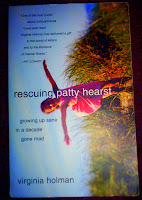I've never read a lot of self-help, mind you. Most of those books always seemed too hokey and full of advice tailored to nitwits with zero common sense. Harsh? Probably, but that's how I saw it - until, of course, I was hit with a depression so black I had trouble seeing my way out.
So I started browsing books at the library or taking my friends and my then-therapist up on their recommendations. I read portions of some books, but there were two I actually read cover-to-cover. Not your typical idea of "self-help" nonfiction, my two favorites nevertheless helped me in ways that were invaluable:
The Tao of Pooh by Benjamin Hoff - Hoff uses Winnie-the-Pooh and his friends to explain the philosophy of Taoism. This book made me breathe - or reminded me to. It made me slow down instead of rushing to "save time," which is actually impossible but something I'd still been trying to do without even noticing.
"A way of life that keeps saying 'around the corner, above the next step' works against the natural order of things and makes it so difficult to be happy and good that only a few get to where they would naturally have been in the first place - Happy and Good - and the rest give up and fall by the side of the road, cursing the world, which is not to blame but which is there to show the way. "
- from The Tao of Pooh
Radical Sanity by Elizabeth Wurtzel - Filled with thoughtful quotes from musicians, etc. and what she calls "common sense advice for uncommon women," Wurtzel's departure from memoir (Prozac Nation) is a diamond in the self-help rough, if ever there was such a thing. In the introduction, the writer admits of herself, "I am not the happiest person. In fact, in the battle between joy and misery, I'd say the latter often seems to prevail." Small enough to re-read in a day, her book doesn't skimp on advice that maybe should be "common sense" but, in our wound-up and self-depreciating lives, is probably the stuff we don't allow ourselves to realize as often as we should. Things like: Save Yourself (meaning don't expect someone else to do it) and Use All Available Resources. Then there are some of my personal favorites: See Lots of Movies and Eat Dessert - oh yes! She ends it with something I have often said but, I think, actually have trouble believing - Anything Is Possible. But even when I am not sure I agree with her advice, I am charmed by her wit and candor and happier just to see things differently for the moment.
Louise Tripp grew up in North Carolina. She currently lives in Chicago, where she is revising her first YA novel and working in a public library. You can read her regular blog at http://risktoblossom.blogspot.com.






















